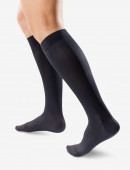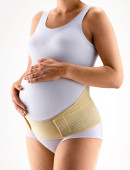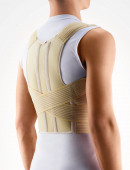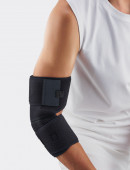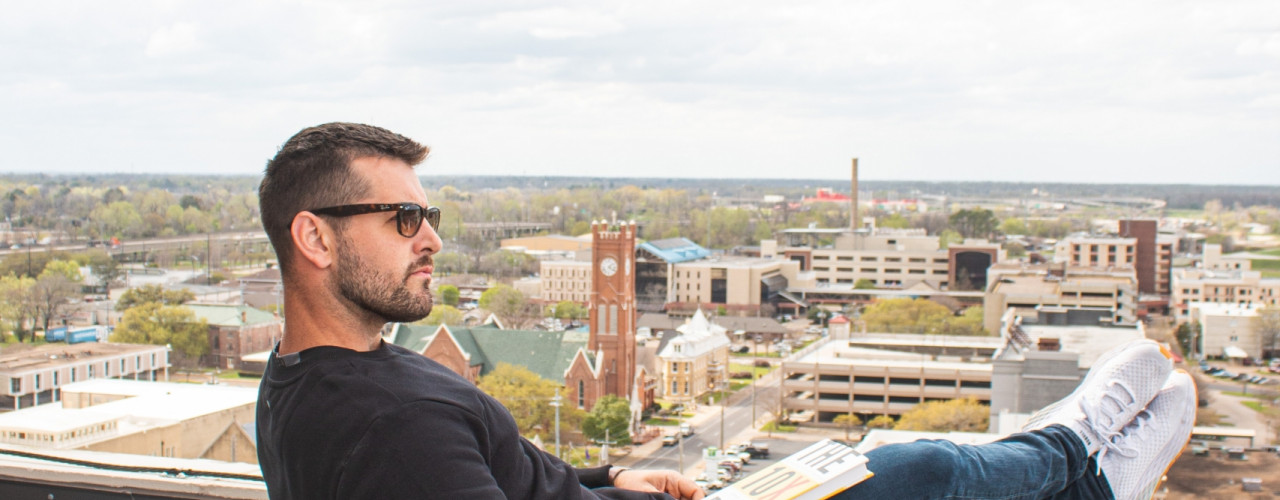Intervertebral disc hernia or rupture is a diagnosis many people are exposed to within their lifetime. Without timely treatment, this disease may cause serious health disorders and a significant loss of quality of life. Yet, there is also good news; if detected early, the problem may be treated successfully, and it is a myth that only surgery may help.
What are the causes of intervertebral disc hernia?
Our spinal cord consists of vertebrae between which the intervertebral discs are placed. They are natural shock absorbers, with a core inside, a gelatinous substance. In lighter cases, the disc only vaults, but due to various reasons it may also be torn, and the core mass may leak. If this happens, the person experiences sharp pain. With time it may reduce or disappear completely, but the pain may project to the leg. This means that the compressed intervertebral disc has pressed on the nerve roots. For this reason, if earlier, when the pain was only experienced in the back, the person was patient and did not seek the help of a doctor, this is the moment when one should not delay it any longer. Upon delaying the visit or hoping the pain will stop, the nerve roots may be pressed to the extent the nerve is destroyed and because of that the person may no longer control the movements of the leg.
The doctor will listen to complaints, inquire about the characteristics of the pain, and prescribe the necessary examination to establish the diagnosis. The most precise way to do it is a magnetic resonance scan.
What are the reasons for intervertebral disc hernia?
This is one of the first questions that people ask, when they learn about the diagnosis.
There are different reasons:
- heavy physical work or just one unfortunate time of lifting heavy loads,
- excess body weight,
- sports or other injury,
- excess physical activity,
- poorly developed posture muscles,
- genetics.
Treatment Possibilities
With the development of the possibilities of medicine, the myth should be dissipated that in the case of disc hernia the only possible treatment is surgery. On the contrary – today the doctors first try out the available conservative healing methods and only then, if they do not attain the expected result in a longer period and the condition of the patient does not improve, should surgery be considered. Conservative healing is especially successful in cases when the hernia is very small, and the nerve root is not pressed. Yet, it is also possible to do it without an operation if the patient is ready to cooperate.
After completing all the necessary examinations and establishing a clear picture of the illness, the doctor shall choose the treatment method most suitable for each patient. Most often, various types of treatment are combined: medical treatment; medical gymnastics, physiotherapy, including water procedures, as well as the use of epidural block.
If, however, it is not possible to achieve an improvement of the situation, the need for surgery is evaluated. Today, it is carried out by a very small cut in the back, releasing the pressure on the nerve, but maintaining the intervertebral disc, which will also have a shock-absorbing function in the future. Most often, the patient may already go home on the next day, of course, observing the healing regimen prescribed, not allowing any complications.
Recovery after herniated intervertebral disc surgery
Recovery time after surgery depends on several factors, for instance, age, general health condition and the type of surgery. The more invasive the surgical intervention, the longer the recovery time. Respectively, the use of minimally invasive techniques may result in a few weeks of recovery time, while more extensive vertebral column fixation surgery may require a recovery time of up to half a year.
The initial back pain will not be relieved immediately after surgery. This will happen gradually if the right regimen is observed. It is important to follow the recommendations of your doctor and physiotherapist in the post-operative period to speed up your recovery and prevent complications. Disc herniation surgery often requires subsequent medication therapy and physiotherapy.
Patients usually return to work two to four weeks after surgery, if the work is not physically demanding. If the work involves significant physical exertion, the patient should expect a longer recovery period of eight to 12 weeks.
Prevention of recurrent back pain is an important aspect:
- a programme of exercises must be followed;
- correct posture must be maintained while standing, sitting, moving or lying down;
- if there is more strain or pain, a back support belt should be worn;
- the design of the workspace must be ergonomic;
- the patient must follow a healthy diet and control their body weight to reduce pressure on the spine;
- physical activity must be increased gradually by including walking, which can improve circulation and general health.
Support Belts Both as a Precaution and During Treatment
Support belts play an important role in the treatment of the disc hernia both with conservative methods and before and after surgery. They stabilise the spinal column, reduce the load on the spinal muscles, reducing pain as a result, alleviating movement, and improving the way the patient feels. Which belt should be chosen for the specific stage of healing is best recommended by a doctor. It should also be taken into account that disc hernia may reoccur, therefore people who already have experienced it, are also recommended to use support belts in their future life during increased physical activity and similar situations. As a precaution, they should also be used in sports, to avoid intervertebral hernia.
Photo by Ronnie George on Unsplash

